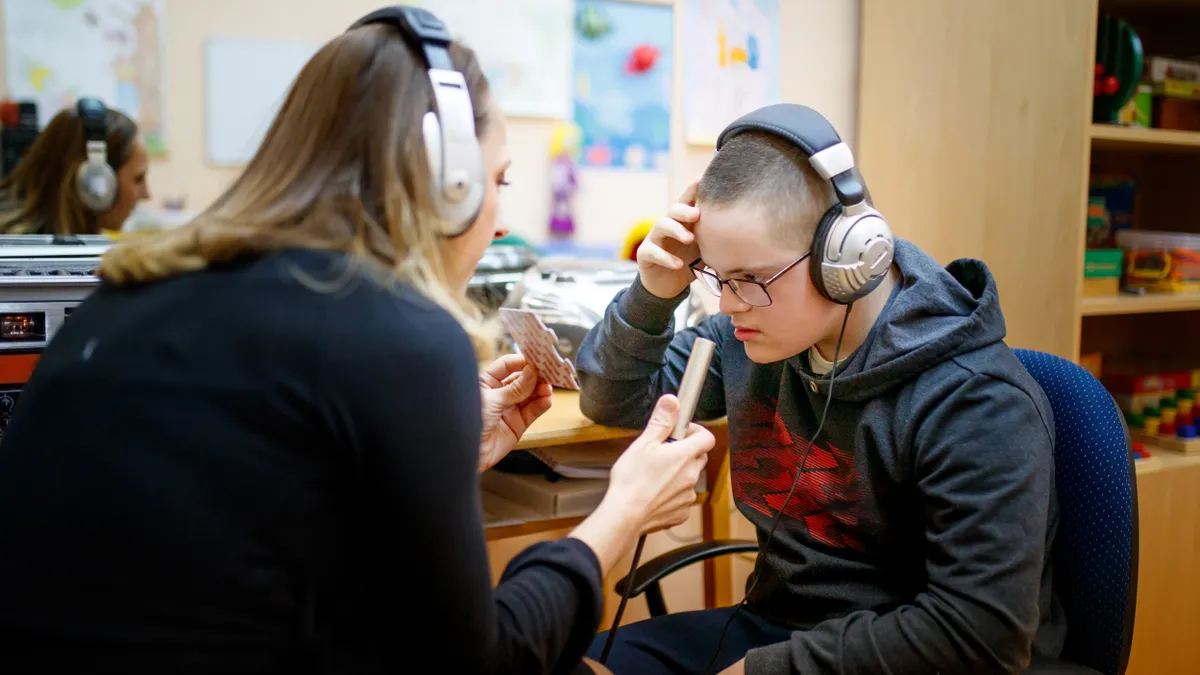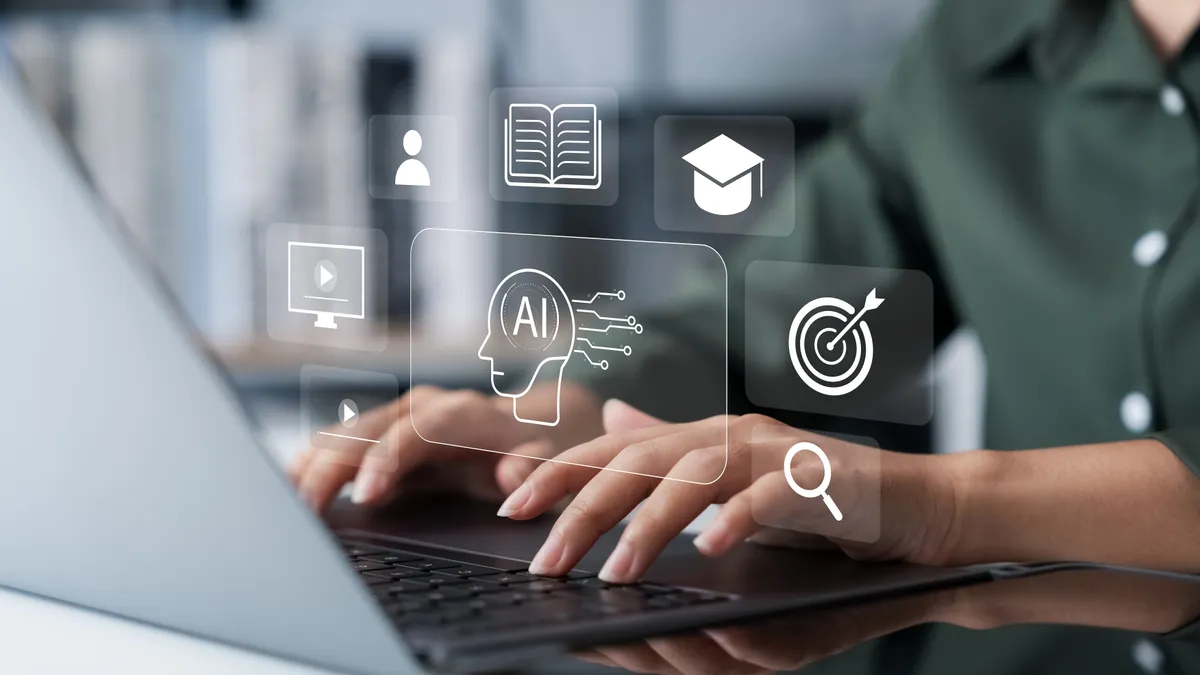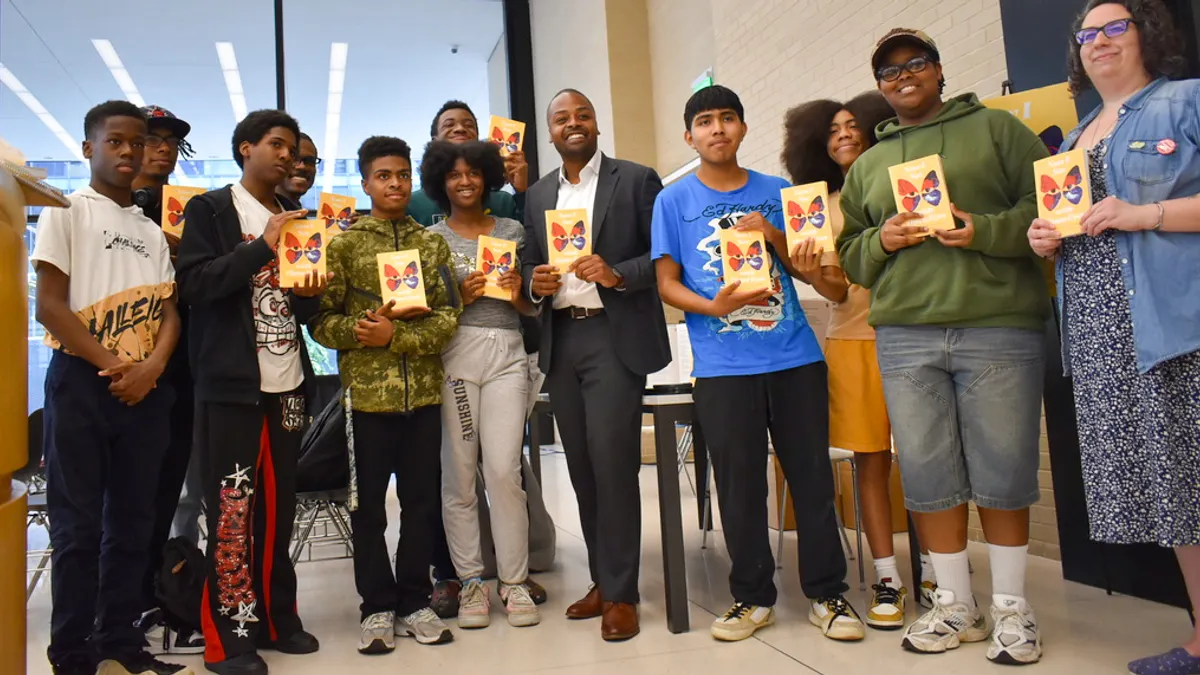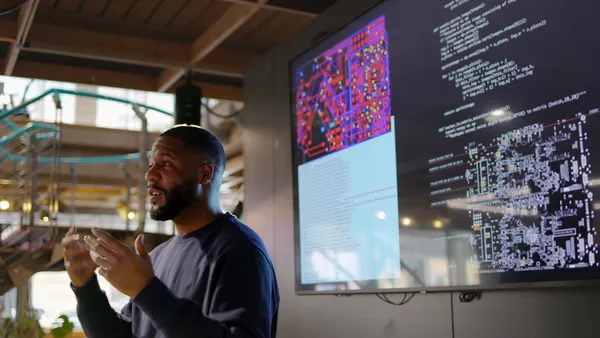The small microphone pinned to the teacher each day was barely noticeable. But for the student with a hearing impairment who now heard her instructor’s voice with clarity through headphones, the effect was clear, recalls Fabienne Doucet.
Doucet, the executive director for New York University’s Metropolitan Center for Research on Equity and the Transformation of Schools and an associate professor of early childhood and urban education, had been supervising a student teacher as part of the educator’s training, and while the microphone didn’t change the way the teacher worked with her class, the small addition elevated the learning experience for their pupil significantly.
“It didn’t take away from anyone — and in fact, it added to the student and their learning,” said Doucet. “It’s not doing something special. It’s thinking about everyone."
While all students come into classrooms with an expectation to learn, learning needs can be varied and distinct, including vision and hearing impairments, attention-deficit hyperactivity disorder or dyslexia. When it comes to learning styles, diversity abounds.
Designing a curriculum to address all these distinctions can be a challenge. Luckily, there are tools, resources and approaches that can help educators create successful opportunities for all learners. The first step is to address existing student needs and then look for solutions that can support all students and their unique needs.
“Equity is providing folks with what they need to meet those outcomes,” said Doucet.
Equitable solutions expand learning for all
Screen readers and contrast tools, which can make text pop more clearly on a digital page, are learning tools that support students who have vision and hearing needs. But these tools can also support pupils who may be learning English as a second language, providing another layer of support to help them translate as they read. These supports also serve learners — and educators — who prefer to multi-task, allowing them to listen to an online lesson while working through a problem set at the same time.
“These tools are not designed for one student, but provide flexibility for all,” said Luis Pérez, a technical assistance specialist at CAST, which promotes a universal design for learning approach for classrooms.
Pérez, who has been with CAST for almost five years, advocates for technology that can expand the way students engage with curriculum. A print article is a fixed learning tool — students can’t zoom into a page or even brighten the page for more clarity. Digitize that material with accessibility in mind, however, and suddenly a lesson can be made more equitable to a variety of learners. Text size can be increased for those with low vision, or fonts changed for those with dyslexia — or just those who find serif fonts like Times New Roman harder to read.
“The benefit of technology is that it gives you the flexibility to not just deliver information to learners, but help them navigate it in different ways and remove barriers,” said Pérez.
The point that more options benefit all learners rather than favoring a few is one Doucet stands behind, as well. She said educators and curriculum designers can use this argument when presented with pushback about added tools and programs, calling them “special” or “add-ons” for some and not for others.
“We are already doing some for some, and not for others,” Doucet said. "Some people get all the things, and others have to deal. What we're helping people do is flip the script so that the most widely available and most openly accessible is beneficial to everyone as opposed to being restrictive, and doing something special.”
Including IT in your toolbox
One resource that may already be in-house is IT staff who work on a school’s site or within a district and may be fluent in many accessibility tools educators can adopt quickly — and without any added expense.
Sheryl Burgstahler, founder of the Disabilities, Opportunities, Internetworking, and Technology Center and director of accessible technology services at the University of Washington, recommends reaching out to these experts before signing up for or moving forward with any technology add-ons. Running ideas or apps by them first may help teachers and curriculum designers hone how to apply more UDL plans to their lessons.
“I would invite IT people to be part of your planning when thinking about who may or may not have full access to materials,” said Burgstahler, also a former middle school teacher.
Burgstahler suggests these conversations should happen before lesson plans and materials are constructed and not after. For example, she said, YouTube can generate captions for videos that educators may upload as part of their curriculum. But captions often need to be edited no matter how good the AI is. That step can only be taken by the person — in this case, the teacher — who uploads the material.
IT experts can also help teachers learn about different UDL features, which may not be immediately apparent. For example, educators may be able to download ad blockers to help students who have ADHD focus. The site NoMouse.org is another resource that lets educators test whether a web page can be navigated without a mouse — a device that may be difficult to use for students with physical challenges.
Another option is to go to the University of Washington's IT accessibility checklist, which can help educators examine whether the lessons and materials they’re hoping to bring into the classroom are as equitable to all learners as possible.
Don’t ignore physical spaces and devices
Educators should also consider how their classrooms are set up, especially for those teaching science, technology and engineering classes that may lean heavily on hands-on learning. Experts suggest examining whether assistive technology is available so a student with low-vision or mobility challenges can still participate in a chemistry experiment or a robot design assignment.
Lowering work benches or widening aisles can ensure students in wheelchairs, for example, can still help a lab partner dissect a frog or work on the same computer during a group project.
Even technology pointedly designed to increase accessibility should be reassessed to ensure it meets the needs of students, said Pérez. He points specifically to augmented and virtual reality devices, which expand a user’s experience through virtual environments and often haptic and vibrational feedback but may not be optimum for all pupils.
“People with balance issues can’t put on the headsets and use the technology,” Pérez said.
For those educators who end up feeling overwhelmed and worried about making a mistake, the best decision any teacher can take to expand inclusive options for students is to take the first step, Pérez added. Going in with the mindset that everything has to work for everyone at the outset can stop educators from even trying, which ultimately helps no one.
“What I feel holds back educators is they let perfect get in the way,” Pérez said. “They should remember this is a journey."



















